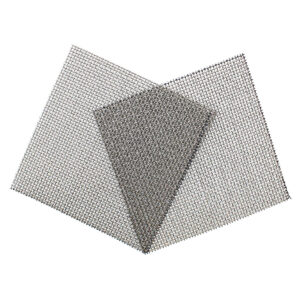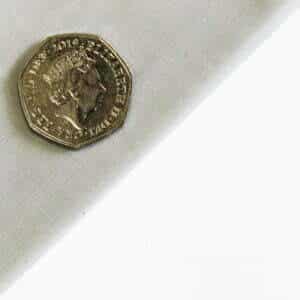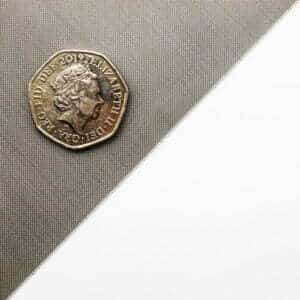









A variety of industries use screen printing, from textiles and apparel to electronics and signage. It’s the perfect blend of artistry and precision engineering.
An unassuming yet pivotal component of the screen printing process is the woven mesh. As the linchpin in the quest for screen printing excellence, mesh plays a critical role in print precision, ink deposition, and overall product quality.
There’s more to mesh selection than just preference, with factors like mesh count, material, and weave type playing a crucial role. The mesh count, or the number of threads per inch, determines the mesh’s resolution and ink flow. Mesh materials, like synthetic fibers and metals, determine its resilience, adaptability, and interaction with different inks. Last but not least, the weave type can affect the mesh’s structural integrity and printing precision.
In pursuit of unmatched quality and performance, these factors form the cornerstone of effective screen printing.
Let’s get into it…
During the screen printing process, mesh count plays a crucial role in determining not only the resolution of the print but also the flow of ink. Higher mesh counts, characterised by a greater number of threads per inch, are synonymous with finer detail. These materials are adept at supporting intricate designs, particularly on materials like paper or textiles that readily absorb ink. Due to their tight weave, high mesh count screens are ideal for applications that require precision and subtlety.
A lower mesh count, however, has a larger opening between the threads, allowing a more substantial ink deposit with each pass. Because of this characteristic, they are ideal for printing on less absorbent materials like plastics or metals, where a thicker layer of ink is required to achieve vibrant, lasting prints. In this case, choosing between a high mesh count and a low mesh count becomes a balancing act between the desired print detail and the substrate’s physical characteristics.
It is not just a matter of preference, but a decision that is deeply rooted in the specifics of the artwork and substrate. This selection process takes into account factors such as the viscosity of the ink, the texture of the substrate, and the complexity of the design. In contrast, bold graphics on a rigid substrate may be better served by a mesh with fewer threads per inch for designs that require sharp, fine lines on a smooth textile.
In order to achieve the desired balance of clarity, color intensity, and texture in the final print, mesh count must be understood. With this nuanced understanding, screen printers are able to create stunning works of art from simple designs that will stand the test of time.
The two primary categories of mesh materials are synthetic fibers, such as polyester and nylon, and metals, notably stainless steel. Each material brings its unique set of advantages to the table, tailoured to meet the diverse needs of screen printing projects across various industries.
Synthetic Meshes, predominantly made from polyester or nylon, are widely celebrated for their uniformity. The consistency of ink deposition across the print is crucial to achieving high-quality results. From delicate textiles to robust industrial components, synthetic meshes are inherently flexible. In addition to their chemical resistance, these meshes are also able to withstand the harsh solvents and cleaning agents used in screen printing. A polyester mesh, in particular, is known for its tensile strength and durability, which makes it the material of choice for textile printing.
Stainless Steel Meshes stand on the other end of the spectrum, prized for their precision, durability, and resilience to extreme conditions. Unlike synthetic meshes, stainless steel meshes maintain their shape and tension for extended periods of time and through rigorous printing cycles, unlike their synthetic counterparts. Due to its resistance to heat and corrosive substances, this material is ideal for industrial applications, such as circuit board printing in the electronics industry. For applications requiring high-resolution outputs, stainless steel mesh allows for finer detail in prints.
While synthetic meshes offer versatility and chemical resistance suited to a broad spectrum of screen printing applications, stainless steel meshes excel in environments where precision and durability under challenging conditions are paramount. The choice between synthetic and metal meshes ultimately depends on the specific requirements of the printing project, including the nature of the substrate, the type of ink used, and the desired longevity of the print.
The weave type of the mesh is another crucial factor that impacts screen printing outcomes, influencing everything from the strength and stability of the mesh to its ink flow characteristics. The Plain Weave, characterised by its simple over-and-under pattern, is the most common weave type used in screen printing. This weave offers a balanced combination of strength and open area, making it suitable for a wide range of screen printing tasks. Its straightforward structure ensures even tension across the mesh, a key factor in achieving uniform ink deposition.
For projects requiring finer detail and higher mesh counts, the Twill Weave presents an advantageous alternative. This specialised weave type allows threads to pass over two or more intersecting threads, creating a denser mesh without compromising the fabric’s stability. The result is a mesh capable of supporting higher mesh counts, thereby enabling finer detail in prints without sacrificing the mesh’s integrity. Twill weave meshes are particularly well-suited for high-detail printing applications where print quality is paramount, such as detailed graphic work or intricate industrial designs.
Choosing the correct weave type is essential in optimizing the screen printing process, ensuring that the mesh not only supports the desired level of detail and ink deposition but also maintains its structural integrity over time. Whether opting for the versatility of plain weave or the precision of twill weave, understanding the impact of weave type on printing outcomes allows screen printers to tailor their approach to each project, ensuring the highest standards of quality and performance are achieved.
Screen printing mesh selection is a nuanced decision that profoundly impacts print quality, efficiency, and overall project success. The type of ink, substrate material, and desired print resolution all play a crucial role in determining the most suitable mesh.
Ink Type: Mesh choice is directly influenced by the viscosity and type of ink – whether water-based, plastisol, or UV. Thinner inks generally require a higher mesh count to prevent bleeding and ensure sharp lines, whereas thicker inks may require a lower mesh count to adequately deposit ink.
Substrate Material: Depending on the substrate-whether it’s a soft textile, a rigid plastic, or a delicate paper-the level of detail and volume of ink required will be different. Printing on softer substrates may require a mesh with a higher mesh count for a heavier ink deposit, while printing on harder substrates may require a finer mesh count.
Desired Print Resolution: Mesh counts are determined by the level of detail in the artwork. As mesh counts increase, finer details can be accommodated, but less ink passes through the mesh. To achieve the desired print resolution, it is essential to understand the balance between detail and ink deposition.
To ensure compatibility and achieve the desired results, it’s advisable to conduct practical tests with mesh samples, using the intended ink and substrate. This hands-on approach allows screen printers to observe firsthand how different mesh counts and materials interact with the ink and substrate, providing valuable insights into the optimal mesh selection for their specific project needs.
To assist with this decision we have made a simple guide:
| Mesh Count (LPI) | Wire Diameter (mm) | Material | Best For | Comments |
|---|---|---|---|---|
| 110 | 0.09 | Polyester | Fine detail printing on textiles and ceramics | High-resolution printing due to fine mesh count |
| 86 | 0.13 | Polyester | Printing on glass and ceramics | Provides good detail while allowing thicker ink passage |
| 230 | 0.06 | Polyester | High-detail, intricate designs on paper and fine textiles | Very fine mesh, suitable for detailed prints |
| 305 | 0.03 | Polyester | Electronic circuit printing, high-precision designs | Ultra-fine mesh for very precise and intricate designs |
| 160 | 0.08 | Nylon | General-purpose screen printing on textiles and graphics | Versatile mesh suitable for a variety of printing applications |
| 80 | 0.14 | Nylon | Heavy ink deposits on textiles and industrial applications | Allows for thick ink deposits, suitable for bold designs |
| 200 | 0.05 | Nylon | Detailed graphics on fine fabrics and substrates | Fine mesh suitable for detailed and high-resolution prints |
| 150 | 0.065 | Stainless Steel | Printing on challenging substrates, industrial applications | High durability and precision, ideal for tough printing tasks |
| 60 | 0.16 | Stainless Steel | Applications requiring thick ink layers, industrial marking | Strong mesh for robust applications, provides thick ink layers |
| 325 | 0.03 | Stainless Steel | Precision electronic component printing, intricate designs | Ultra-fine mesh offering the highest level of detail and precision |
| 120 | 0.08 | Stainless Steel | General-purpose printing with moderate detail | Offers a good balance between detail and ink deposit capability |
| 40 | 0.25 | Stainless Steel | Heavy-duty printing tasks, industrial applications | Very strong mesh, suitable for applications requiring robust and thick ink layers |
| 24 | 0.355 | Polyester (Coarse) | Coarse printing tasks, heavy ink layers on industrial materials | Coarse mesh for applications requiring very thick ink layers and robust durability |
Selecting the right woven mesh for screen printing requires a thorough understanding of the project’s specific requirements, including mesh count, material, and weave type. A good mesh not only helps with print quality and efficiency, but also elevates the overall screen printing project. Screen printers can make informed decisions based on factors like ink type, substrate material, and desired print resolution.
Screen printing presents unique challenges, so consulting with mesh and screen printing experts can ensure you pick the best mesh. They can help you navigate the complexities of mesh selection by offering insights into the latest materials and techniques. A thoughtful and informed approach to mesh selection is crucial to the success of screen printing endeavors.
The purpose of this article is to equip practitioners with the knowledge they need to navigate the selection process confidently, ensuring the best possible results. With expert guidance and practical testing, you can achieve screen printing excellence.
As always, thank you for checking out our blog. We hope that this helps you with your project. We try to launch a couple of new guides every week. Eventually we will have covered everything there is to cover about mesh.
You may be interested in our blog that explores how to choose between different mesh types.
Our goal for our blogs and help guides is to answer as many questions as possible to help to explain the possibilities of mesh to our customers.




